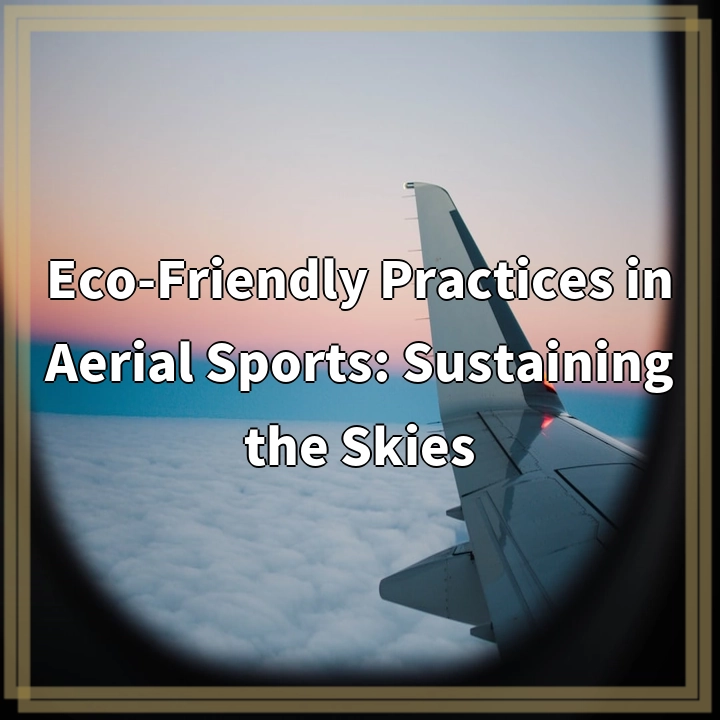
What it is:
Eco-Friendly Practices in Aerial Sports: Sustaining the Skies refers to the various initiatives, strategies, and actions taken within aerial sports to minimize negative impacts on the environment. It involves adopting sustainable practices, utilizing eco-friendly technologies, and promoting responsible behavior among participants and stakeholders. Aerial sports encompass activities such as paragliding, hang gliding, skydiving, and hot air ballooning, which all have unique challenges and opportunities for environmental conservation.
Real-World Problems:
1. Carbon Emissions:
Aerial sports typically involve the use of fuel-powered aircraft or equipment, leading to significant carbon emissions. The burning of fossil fuels contributes to climate change and air pollution, both of which have detrimental effects on the environment and human health. Finding alternative, eco-friendly energy sources or reducing carbon emissions through efficiency measures is crucial for the sustainability of aerial sports.
2. Noise Pollution:
Aerial sports often produce high levels of noise, which can disturb wildlife, disrupt ecosystems, and disturb local communities. Noise pollution can have negative impacts on both animals and humans, causing stress, communication interference, and habitat disruption. Implementing noise reduction measures, such as using quieter aircraft or adjusting flight paths, can help mitigate these issues.
3. Wildlife and Habitat Protection:
Aerial sports can potentially disrupt natural habitats and harm wildlife, particularly in sensitive areas such as nature reserves or protected wilderness areas. The presence of aircraft or excessive human activity can disturb nesting and breeding grounds, cause habitat destruction, or lead to collisions with birds and other wildlife. It is vital for aerial sports enthusiasts to respect and protect these environments by following guidelines and regulations, as well as advocating for the conservation of natural areas.
4. Waste Management:
Aerial sports involve the use of equipment, such as parachutes, gliders, and balloons, which may generate waste. Proper waste management is essential to ensure that materials are disposed of correctly and do not contribute to pollution. This includes recycling materials, minimizing single-use items, and educating participants on environmentally-friendly waste practices.
By addressing these real-world problems and implementing eco-friendly practices, aerial sports can contribute to the preservation of the environment, while still providing thrilling and enjoyable experiences for participants. Taking responsibility and actively seeking sustainable solutions will enable the continued enjoyment of aerial sports for future generations.

Summary of Solutions:
1. Carbon Emissions:
To address carbon emissions, aerial sports can explore alternative energy sources, such as electric-powered aircraft or equipment. Additionally, implementing efficiency measures and promoting responsible fuel consumption can significantly reduce carbon footprints.
2. Noise Pollution:
Mitigating noise pollution in aerial sports can be achieved by investing in quieter aircraft technology, adjusting flight paths to minimize noise impact on communities and wildlife habitats, and adhering to noise reduction guidelines and regulations.
3. Wildlife and Habitat Protection:
Protecting wildlife and habitats entails adhering to specific flight restrictions in sensitive areas, respecting protected wilderness zones, and raising awareness among aerial sports enthusiasts about the importance of preserving natural environments.
4. Waste Management:
Proper waste management can be achieved through promoting the use of reusable equipment, encouraging responsible disposal and recycling practices, and providing education on minimizing waste generation during aerial sports activities.
Implementing these solutions will help promote the sustainability of aerial sports, ensuring the preservation of the environment and minimizing the negative impacts associated with these activities.















